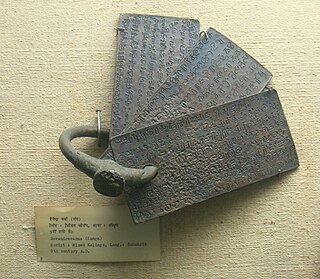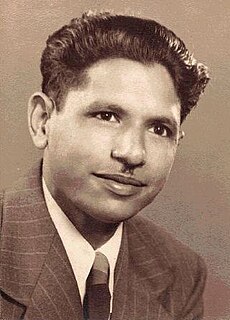
Odia is an Indo-Aryan language spoken in the Indian state of Odisha. It is the official language in Odisha where native speakers make up 82% of the population, and it is also spoken in parts of West Bengal, Jharkhand and Chhattisgarh. Odia is one of the many official languages of India; it is the official language of Odisha and the second official language of Jharkhand. The language is also spoken by a sizeable population of at least 1 million people in Chhattisgarh.

Kalahandi is a district of Odisha in India. The region had a glorious past and great civilisation in ancient time. Archaeological evidence of Stone Age and Iron Age human settlement has been recovered from the region. Asurgarh offered an advanced, well civilised, cultured and urban human settlement about 2000 years ago in the region. In South Asia it is believed that the lands of Kalahandi district and Koraput district were the ancient places where people started cultivation of paddy. In ancient time it was known as Mahakantara and Karunda Mandal, which means treasure of precious stones like karandam (corundum/manik), garnet, beruz, neelam, and alexandrite, etc. Manikeswari is the clan deity of Kalahandi may also signify its historical name.

The Kalinga script or Southern Nagari is a Brahmic script used in the region of what is now modern-day Odisha, India and was primarily used to write Odia language in the inscriptions of the kingdom of Kalinga which was under the reign of early Eastern Ganga dynasty. By the 12th century, with the defeat of the Somavamshi dynasty by the Eastern Ganga monarch Anantavarman Chodaganga and the subsequent reunification of the Trikalinga(the three regions of ancient Odra- Kalinga, Utkala and Dakshina Koshala) region, the Kalinga script got replaced by the Siddhaṃ script-derived Gaudi or Proto-Oriya script which became the ancestor of the modern Odia script.

Pushpagiri was an ancient Buddhist mahavihara or monastic complex located atop Langudi Hill in Jajpur district of Odisha, India. Pushpagiri was mentioned in the writings of the Chinese traveller Xuanzang and some other ancient sources. Until the 1990s, it was hypothesised to be one or all of the Lalitgiri-Ratnagiri-Udayagiri group of monastic sites, also located in Jajpur district. These sites contain ruins of many buildings, stupas of various sizes, sculptures, and other artifacts.
Odia Muslims are a community of people hailing from the Indian state of Odisha who follow Islam and primarily speak Odia language. They mostly descend from indigenous converts to Islam along with a small proportion that migrated from northern India. They are marked by their distinctive religious practices, food habits and language.
Odia literature is the literature written in the Odia language and predominantly originates in the Indian state of Odisha. The language is also spoken by minority populations of the neighbouring states of Jharkhand, West Bengal, Chhattisgarh, Karnataka, Andhra Pradesh and Tamil Nadu. The region has been known at different stages of history as Kalinga, Udra, Utkala or Hirakhanda. Odisha was a vast empire in ancient and medieval times, extending from the Ganges in the north to the Godavari in the south. During British rule, however, Odisha lost its political identity and formed parts of the Bengal and Madras Presidencies. The present state of Odisha was formed in 1936. The modern Odia language is formed mostly from Pali words with significant Sanskrit influence. About 28% of modern Odia words have Adivasi origins, and about 2% have Hindustani (Hindi/Urdu), Persian, or Arabic origins. The earliest written texts in the language are about thousand years old. The first Odia newspaper was Utkala Deepika first published on 4 August 1866.

Bhunjias, are an ethnic group found in India mainly reside in Sunabeda plateau in Odisha and Chhattisgarh. They are mostly found in Nuapada district, which is roughly between 22° 55′ N and 21° 30′ N latitude and 82° 35′ E longitude. It was a part of Khariar Zamindari, which formed the eastern and the southeastern region of Raipur district of Chhattisgarh division in Central Province till 1 April 1936, when it was transferred to Odisha on its creation. It is now in Komna block of Nuapada district in Orissa. In Chhattisgarh they are found in Raipur district.

Bhubaneswar Behera was an engineer, writer and scholar from the Kalahandi district of Odisha.

The history of cave paintings in India or rock art range from drawings and paintings from prehistoric times, beginning in the caves of Central India, typified by those at the Bhimbetka rock shelters from around 10,000 BP, to elaborate frescoes at sites such as the rock-cut artificial caves at Ajanta and Ellora, extending as late as 6th – 10th century CE.

The Board of Secondary Education, Odisha is a board of education for public and private schools under the state government of Odisha, India.
Odisha Premier League (OPL) is the professional Twenty-20 cricket tournament of the Odisha Cricket Association (OCA) in Cuttack, India.

Brajanath Ratha was an Indian poet who wrote in Odia. Brajanath Ratha is internationally recognised and is the recipient of many prestigious awards like the Odisha Sahitya Academy Award, Vishuba Award, Gokarnika Award, First Shudramuni Sahitya Award and Honoured by South Korea's Ambassador, from Global Cooperation Society International, Seol, Republic of Korea for Contribution in World welfare, Cooperation and Services.

Jagannath Prasad Das is an Indian writer, poet, playwright and novelist who writes in Odia. He has dominated the Odia literary scene for over forty years. His literary oeuvre comprise poetry, plays, short stories, novel, essays, children’s poems and nonsense verse. He has done translations of literary works from different languages into Odia and English. He has done extensive research into Odia art and has published three works on the pictorial arts of the state. He has also done paintings, acted on stage and in films, and taken an active part in social and cultural movements. His writings have been widely translated into Hindi, English and other Indian languages, bringing him national recognition. He has been honoured with awards for his writings, the important ones being the Central Sahitya Akademi award for his poetry, the Nandikar Award for plays, the Sarala Award for short stories and the Saraswati Samman for his poetry. He has been connected with literary, cultural, and charitable organisations and has been member/office holder of these bodies.
Dr. Nikhilanand Panigrahy is a popular Science writer and columnist from Odisha, who popularized science in the Odia language. He has been contributing regularly to a variety of prominent Oriya news papers and magazines since 1973.
Manohar Meher was an Indian Oriya language poet. He is regarded as Gana-Kavi or Palli-Kavi of Western Odisha in the arena of Oriya literature. Born on the sacred day of SriRama-Navami of 1885 A.D., Poet Manohar died on 4 December 1969. He has written numerous poems related to Indian heritage, patriotism, social reformation, Odia culture and other like matters. His complete works named as Manohar Granthavali is yet to be published.
Natabar Samantaray was an Odia writer and literary critic. Some of his known literary historical works are Odia Sahityara Itihasa (1803-1920), Adhunika Odia Sahityara Bhittibhumi and Vyasakabi Fakirmohan. His critical review included works of many noted Odia authors like Fakir Mohan Senapati and Radhanath Ray. His historical research includes all of the major Odia writings published during 1803 until 1920 which accentuate the British Raj and its impact in coastal Odisha, and a critical analysis of the modern Odia literature.

Subrat Kumar Prusty is an Indian Odia-language scholar, activist, social entrepreneur, literary critic and author. He is the Member Secretary of the Institute of Odia Studies and Research, Bhubaneswar, Odisha. He was prepared the research documentation and instrumental in advocating the classical status to Odia language forming Central Institute of Classical Odia, Odia University and implementation of the Orissa Official Language Act, 1954. He was selected the first Presidential Award of Maharshi Badrayan Vyas Samman – 2019 for Classical Odia.
Gudahandi also known as 'Gudahandi Hills' and 'Gudahandi Caves' is a pre-historic site in Odisha, India. It is located in the Ampani sanctuary of Kalahandi district of Odisha. It is close to the Nabarangpur district Border and about 17 km and 88 km away from Ampani and District Headquarters Bhawanipatna respectively.

Institute of Odia Studies & Research (IOSR) ଓଡ଼ିଆ ଅଧ୍ୟୟନ ଓ ଗବେଷଣା ସଂସ୍ଥା is a non-profit voluntary organization which aims at research based development of Odia language, literature, culture and training based expanded use of the language in diverse domains. The mission of the institute is to develop Odia as a language of knowledge as well as of development. It is working for the establishment of a Central Institute Of Classical Odia as well as an Odia Biswabidyalaya. During the past ten years the institute has organised discussion groups, state and National level seminars and Conference.












